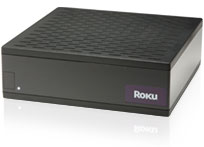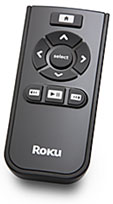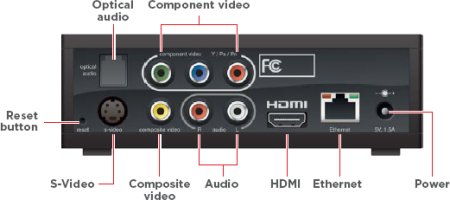Netflix Player runs Linux
May 20, 2008 — by LinuxDevices Staff — from the LinuxDevices Archive — 23 views [Updated May 23] — Netflix is offering a $100 set-top box aimed at enabling subscribers to stream movies on demand, using a broadband Internet connection. The player runs Linux, and is supplied by Roku, a California-based company known for its Linux-based PVRs (personal video recorders).
[Updated May 23] — Netflix is offering a $100 set-top box aimed at enabling subscribers to stream movies on demand, using a broadband Internet connection. The player runs Linux, and is supplied by Roku, a California-based company known for its Linux-based PVRs (personal video recorders).


Roku Netflix Player
Netflix is hoping the device will cut down on the volume of support calls from users of its on-demand service, a Netflix technical support person revealed. The “Instant” service was formerly limited to users of Windows PCs.
To use the Player, Netflix subscribers first visit the Netflix website using a laptop or PC. There, they add movies to their “Instant” queue. The enqueued items can then be browsed using a TV or projector and the Player's remote control. The remote can also be used to control playback, rate movies, or stop a movie for later resumption at the same spot. While the Player itself has no keyboard, and thus cannot be used to search for content, Netflix spins this as a feature for parents wishing to line up a selection of appropriate choices for latch-key kids to watch upon returning from school.
The video above, captured by LinuxDevices contributor Jon Angel, shows the Roku starting up. After that, the user browses several movies from the Intant queue, and selects one for playback. The selection begins to play within a few seconds of pressing play. The Player has no hard drive, instead buffering the content, which streams over broadband. A connection of 1.5Mbps or greater is required, Netflix says. From the video, it appears to be fairly easy to seek particular scenes and jump to random points in the film. A second video demo can be found here.

Roku Netflix Player back
Roku supplies the following details about the system:
- Wired Ethernet
- WiFi (supports WEP, WPA, and WPA2)
- Video and audio connections
- HDMI
- Component video
- S-Video
- Composite video
- Digital optical audio
- Analog Stereo Audio
- Accessories
- Remote control (including 2 AAA batteries)
- A/V cable (yellow/red/white RCA)
- Power adapter
- Getting started guide
- Size approx. 5 x 5 x 2 inches
Roku Spokesperson Tim Twerdahl said that the Player runs Linux on an NXP system-on-chip processor. The device has 256MB of RAM, and 64MB of Flash.
Roku's past Linux design wins include the hacker-extensible Roku HD-1000 media player. Twerdahl said that while no SDK (software development kit) is yet available for the Player, Roku is “looking into it.” He added, “We do want to open the platform up.”
Given the Player's relatively low price point, and built-in WiFi, it certainly seems likely to appeal to Linux hackers. However, the hardware may also be subsidized by Netflix, and locked at the bootloader level (“Tivo-ized,” as Richard Stallman might say) to prevent user-modified operating system software from running. Clearly, preventing users from copying movies through robust security would have to be Roku's top goal.
The Player is available now, priced at $100. It can be ordered online, here.
Thanks to Rick Lehrbaum, for pointing us to his DeviceGuru blog posting about the Player.
This article was originally published on LinuxDevices.com and has been donated to the open source community by QuinStreet Inc. Please visit LinuxToday.com for up-to-date news and articles about Linux and open source.